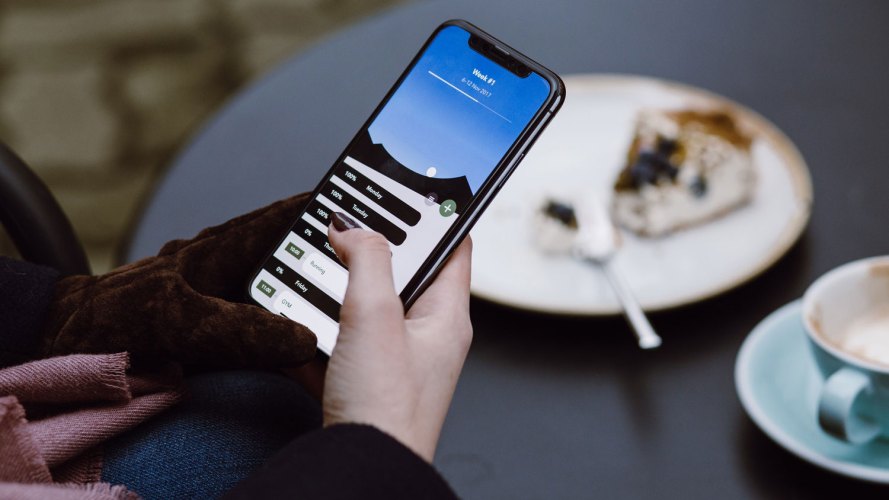Dreamforce is an event like no other. Every year, more than 171,000 Trailblazers gather in San Francisco to learn, network, and get inspired. To make the magic of Dreamforce happen, Salesforce addresses attendees’ needs and wants seamlessly behind the scenes. Ever wondered how we do it? Well, the secret is just that — Salesforce.
To reach and engage attendees before, during, and after this 2,700-session conference, we rely on Marketing Cloud and Service Cloud. During the rush of previous Dreamforce events, our dedicated service team runs lean with only 15 service agents, thanks to mobile messaging tools.
Our team elevated the Dreamforce experience through real-time messaging and user-friendly service, here are some of the lessons learned.
A mobile mindset
When our communications team decided to evolve the messaging aspect of our marketing and service strategies for Dreamforce, we knew using Mobile Studio for mobile messaging was the way to go. Customers (or in this case, Dreamforce attendees) are more empowered than ever, with higher expectations than ever before. That’s why we knew it was important to seize this digital opportunity with mobile messaging at Dreamforce.
Why mobile messaging works
Mobile was an ideal choice because of its high open rate and visibility. Think about it — how likely are you to leave a text message unopened, compared to an email in your already-cluttered inbox full of other unopened messages? The number of unread emails in your inbox is probably glaring with the answer.
So we asked ourselves, Why can’t you send messages to customers the same way you send texts to friends and family? We use texts to communicate in our personal lives, why wouldn’t we leverage this channel to talk with Dreamforce attendees?
In a cluttered digital world where brands and advertisers constantly enter conversations on social media and over email, we tend to keep personal conversations over text. To match the other messages in your text inbox, brands can be more casual and conversational in their tone, addressing the customer directly by name or even having some fun with slang words or emojis.
Tools of the trade
If you want to meet customers where they are, text messaging is a great place to start. According to Pew Research, text messaging is by far the most frequently used feature on smartphones. In fact, 97% of Americans text at least once a day. But, there are many ways to send mobile messages: SMS, in-app notifications, push notifications, and more.
Implementing an SMS strategy at scale can be difficult. That’s why automation tools in a marketing stack can assist in a robust SMS strategy. Using the right SMS technology will enable you to send time-sensitive messages like transaction information, password resets, limited time promotions, and discounts — all automated and personalized. And, SMS is a natural fit for service as well, users can text their service issues, questions, comments, or even photos to a company, which automatically opens a service case.
Text message-based service platforms have been shown to increase customer satisfaction and decrease support costs. Businesses who provide customer service through messaging saw a 29% increase in customer satisfaction, and messaging is 75% less expensive for businesses than voice interactions.
Building the dream
We took SMS and MMS technology and created a mobile messaging experience for Dreamforce attendees that kept them continuously connected and informed throughout the week.
We delivered support during the conference with two-way messaging. For example, we kept attendees in the loop with real-time updates on keynotes, food, logistics, and surprise special guests. We were even able to personalize messages by industry or role through 20 different segmentations.
Messaging allowed service agents to engage with attendees in real-time through SMS conversations. Users could reply to marketing messages and immediately connect with a service agent to answer questions via text. Agents could access prewritten responses, intelligently populated based on the question an attendee was asking (for example, “Will lunch be served at this session?”), allowing for quick responses and the ability to manage multiple conversations at once.
Takeaways
1. Create a communication plan
Think about how brand voice may change when communicating via SMS. Texting is inherently casual and personal. Consider a more conversational tone to make your communications fit the platform. If your marketing and service messages come from different phone numbers, be sure to communicate that to recipients by including handoff language. Lastly, keep texts short and sweet. Any messages over 160 characters in the United States will be split into two or more messages. Keep this in mind as each country has its own set of character rules and general regulations.
2. Set up for success with Quick Text
Mobile messaging is helpful because agents can manage multiple conversations at once, increasing efficiency. To keep reps from having to type unique answers to frequently asked questions, you can use Quick Text for auto-populated predetermined responses to commonly asked questions. This allows agents to answer questions with the click of a button.
3. Connect your communications
A key factor in our success with Dreamforce mobile messaging was the connection between service and marketing messages. An attendee may naturally have questions in response to a marketing message they receive. Because they were able to reply directly to the marketing message and get connected with an agent, it made for a connected customer experience and happy Trailblazer.
To learn more about how we engaged Dreamforce attendees with mobile messaging and how you can also incorporate it into your service strategy, check out our webinar.
[Thumb photo by freestocks on Unsplash]




























